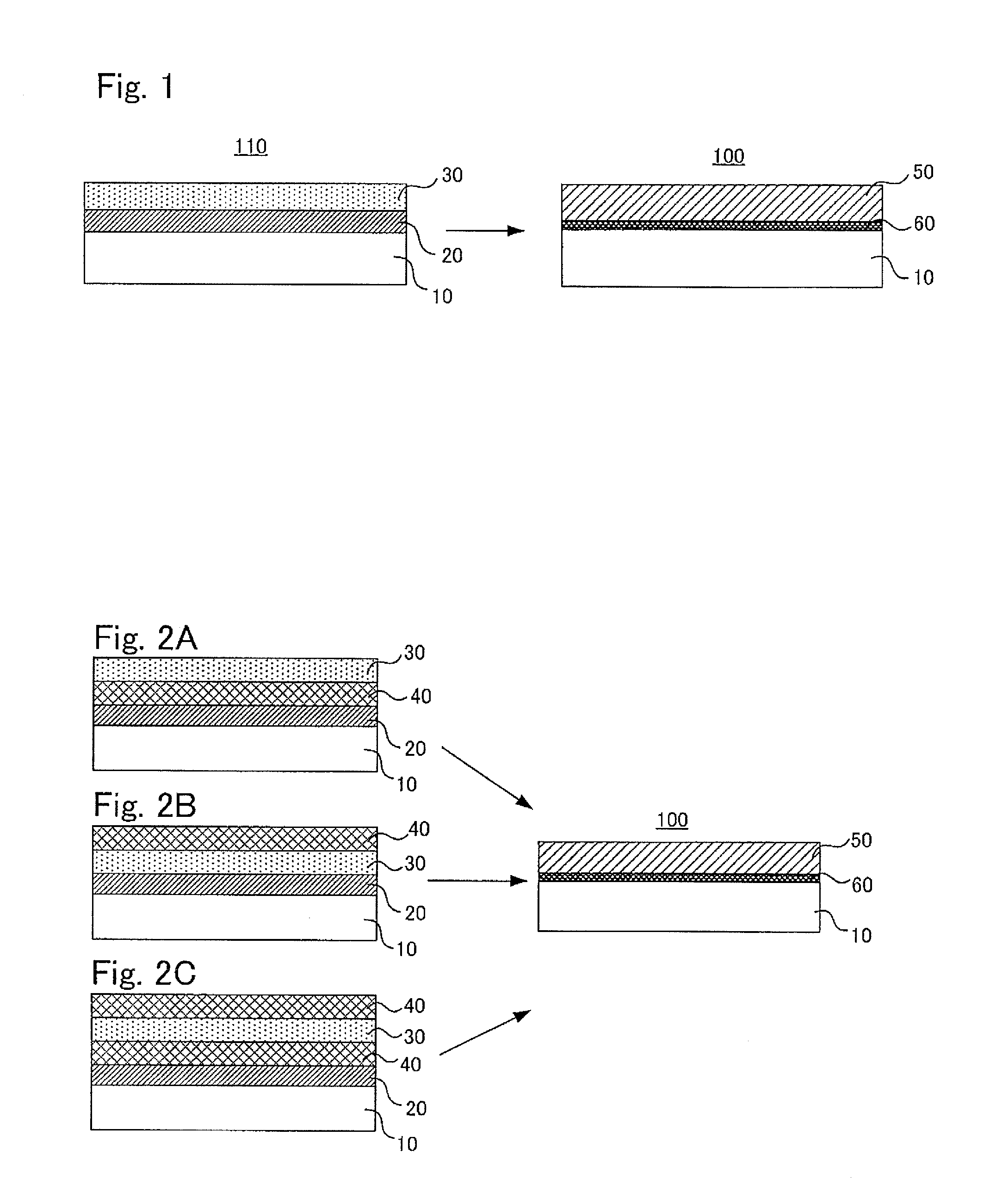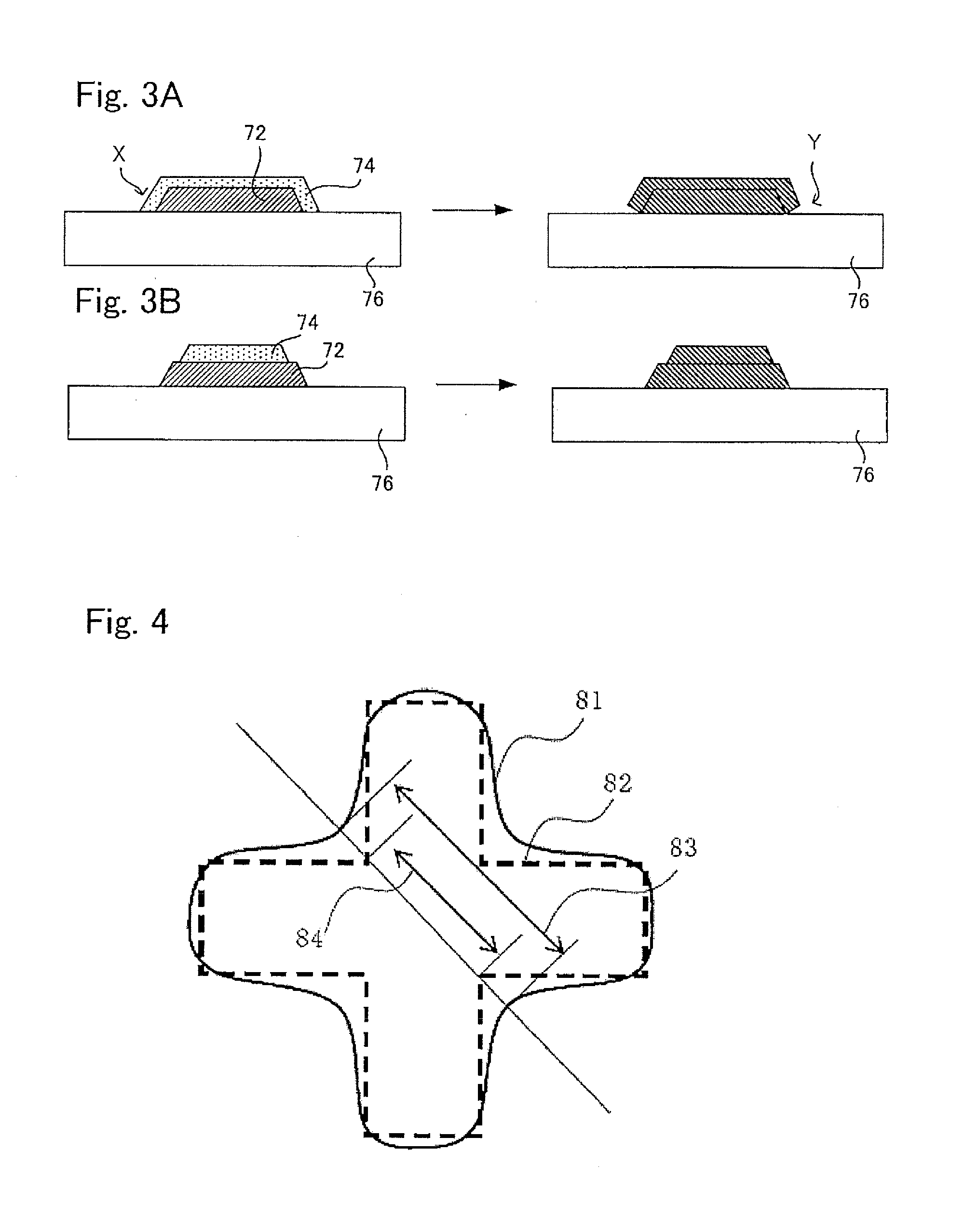Production method of metallized substrate
a production method and substrate technology, applied in the direction of conductive pattern formation, metal/alloy conductors, conductors, etc., can solve the problems of large amount of electric current, increased wiring resistance, difficult to form metal patterns with high dimensional precision, etc., to achieve favorable electric conductivity of metal layer 50, effectively inhibiting diffusion migration of titanium components, and good platability of metal layer 50
- Summary
- Abstract
- Description
- Claims
- Application Information
AI Technical Summary
Benefits of technology
Problems solved by technology
Method used
Image
Examples
example 1
Preparation of a Paste Composition 1
[0111]A mortar was used to pre-mix 15 parts by mass of copper powder having an average particle size of 0.3 μm, 82 parts by mass of copper powder having an average particle size of 2 μm, and 3 parts by mass of titanium hydride powder having an average particle size of 5 with a vehicle in which polyalkyl methacrylate was dissolved in terpineol; and thereafter a three-roll mill was used to subject the mixture to a dispersion treatment, thereby preparing a paste composition 1.
[0112](Preparation of a Paste Composition 2)
[0113]A mortar was used to pre-mix Ag—Cu alloy powder (BAg-8; composition: 72 weight % of silver-28 weight % of copper) having an average particle size of 6μm, with a vehicle in which polyalkyl methacrylate was dissolved in terpineol; and thereafter a three-roll mill was used to subject the mixture to a dispersion treatment, thereby preparing a paste composition 2.
[0114](Production of a Metallized Substrate)
[0115]The above paste compos...
examples 2 to 3
[0117]A metallized substrate was produced in the same manner as in Example 1, except that the material composition of the paste was as shown in Table 1; and was analyzed and evaluated in the following manner. The results are shown in Tables 2 and 3.
example 4
Embodiment Shown in FIG. 2a
[0118](Preparation of Paste Compositions 1 and 2)
[0119]Paste compositions 1 and 2 were prepared in the same manner as in Example 1, except that the material compositions of the pastes were as shown in Table 1.
[0120](Preparation of a Paste Composition 3)
[0121]A mortar was used to pre-mix 20 parts by mass of copper powder having an average particle size of 0.3 μm and 80 parts by mass of copper powder having an average particle size of 2 μm, with a vehicle in which polyalkyl methacrylate was dissolved in terpineol; and thereafter a three-roll mill was used to subject the mixture to a dispersion treatment, thereby preparing a paste composition 3.
[0122](Production of a Metallized Substrate)
[0123]The above paste composition 1 prepared was printed, by screen printing, onto a sintered aluminum nitride substrate (trade name: SH-30, manufactured by Tokuyama Corporation) having a thickness of 0.64 mm; and then was dried at 100° C. for 10 minutes to form a first past...
PUM
 Login to View More
Login to View More Abstract
Description
Claims
Application Information
 Login to View More
Login to View More - R&D
- Intellectual Property
- Life Sciences
- Materials
- Tech Scout
- Unparalleled Data Quality
- Higher Quality Content
- 60% Fewer Hallucinations
Browse by: Latest US Patents, China's latest patents, Technical Efficacy Thesaurus, Application Domain, Technology Topic, Popular Technical Reports.
© 2025 PatSnap. All rights reserved.Legal|Privacy policy|Modern Slavery Act Transparency Statement|Sitemap|About US| Contact US: help@patsnap.com



